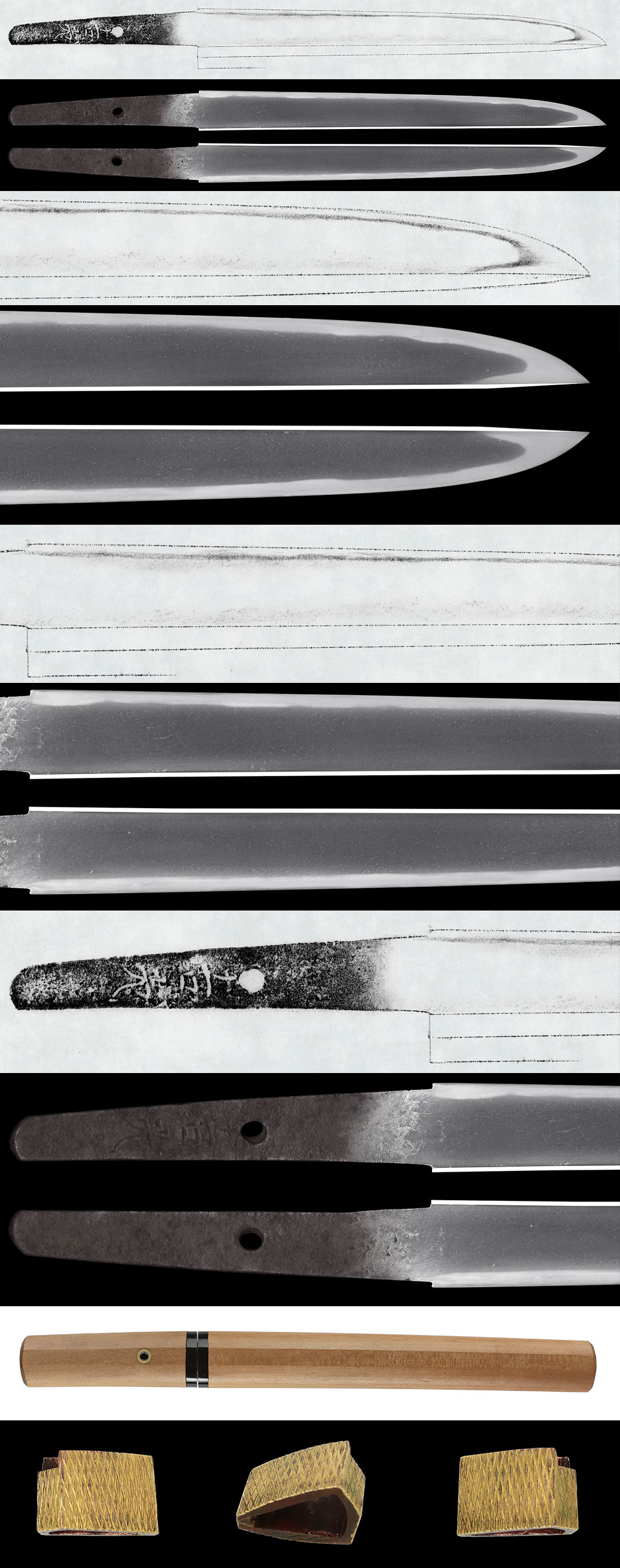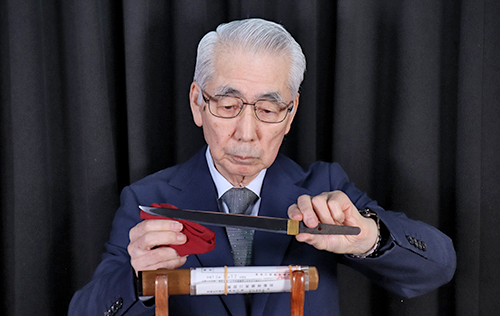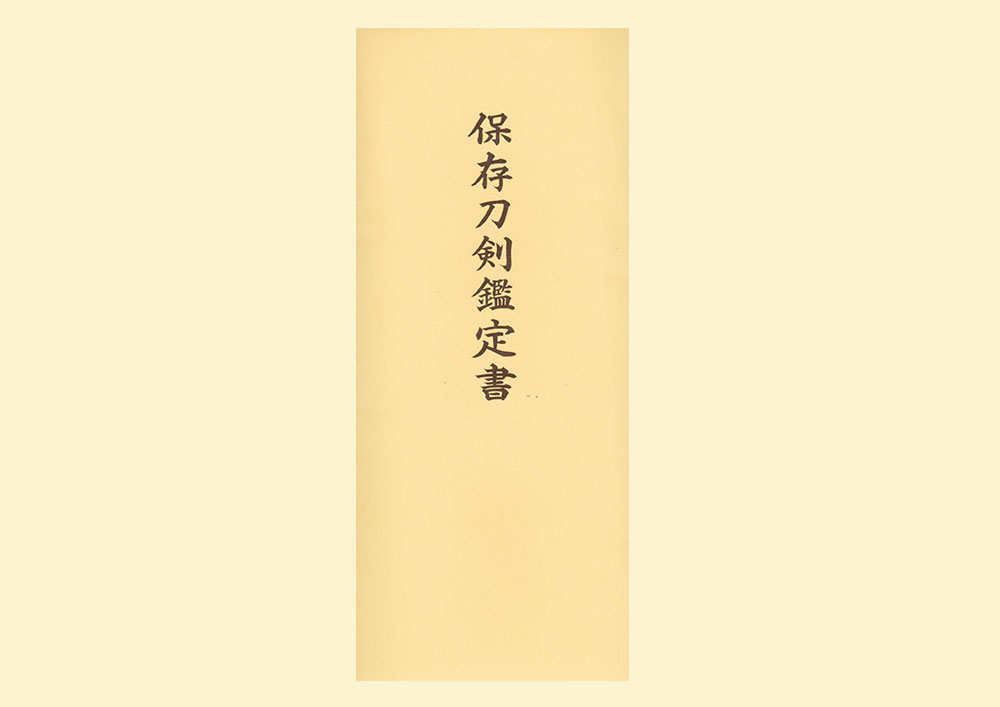Ordering number:24312
Tanto: In Shirasaya (NBTHK Hozon Token)
Signature: Yoshimitsu
吉光
We divide 4 sections for each sword as Saijyo Saku, Jyojyo Saku, Jyo Saku, and Regular Saku.
This work is ranked as a ranking among Yoshimitsu's works.
Habaki: Gold Foil Single Layer
Blade Length: 19.8 cm (7.80 in)
Curvature: Slight inward curvature
Mekugi Hole: 1
Width at Base (Motohaba): 1.96 cm (0.77 in)
Thickness (Kasane): 0.93 cm (0.37 in)
Sword Weight: 155 g
Era: Muromachi Period
Shape:Thick kasane, short blade length, and long nakago.
Jigane:Well-forged ko-itame hada, forming a fine-textured steel surface with utsuri appearing.
Hamon:Nioi-deki suguha.
The boshi turns back in a small round shape (ko-maru).
Features: Tosa Yoshimitsu was a swordsmith lineage with a long history, originating in the Tokuchi era of the Kamakura period and continuing until around the 7th generation in the Daiei era. They were active in Tosa Province. A distinguishing characteristic of their works is the thick kasane, which differentiates them from Bizen Yoshimitsu. Many of their tantos are shorter than usual and have a thick kasane, often believed to be designed as "yoroi-doshi" (armor-piercing daggers).
The hamon is nioi-based suguha. The boshi curves back in a small round shape (ko-maru). The blade also exhibits utsuri, another characteristic feature of their works. Additionally, the nakago is notably long. This style persisted from the Kamakura period through the Muromachi period, maintaining a nearly identical form. This tanto was made during the Muromachi period and slightly thereafter.
NBTHK Hozon Token(*will be issued soon)
Aoi Art Estimation Paper
Whole Oshigata
Price:300,000JPY
Order Form
Related Items:
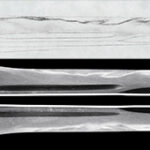 Tanto:Hideyasu Saku (Late Muromachi period)
Tanto:Hideyasu Saku (Late Muromachi period)
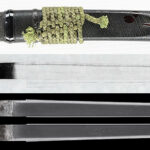 Tanto: Kanezane(Tegai school, Muromachi period)(NBTHK Hozon Token)
Tanto: Kanezane(Tegai school, Muromachi period)(NBTHK Hozon Token)
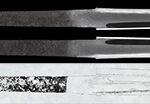 Tanto: Mumei (Unsigned) (Kikuchi Yari)(NBTHK Hozon Token)
Tanto: Mumei (Unsigned) (Kikuchi Yari)(NBTHK Hozon Token)
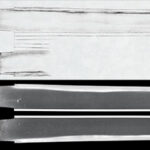 Tanto: Sakuyou Bakkashi Hosokawa Masayoshi(NBTHK Tokubetsu Hozon Token)
Tanto: Sakuyou Bakkashi Hosokawa Masayoshi(NBTHK Tokubetsu Hozon Token)
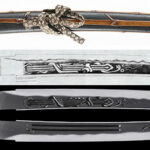 Tanto:Seiryuken Moritoshi(NBTHK Tokubetsu Hozon Token)(Koshirae: NBTHK Tokubetsu Hozon Tosogu)
Tanto:Seiryuken Moritoshi(NBTHK Tokubetsu Hozon Token)(Koshirae: NBTHK Tokubetsu Hozon Tosogu)
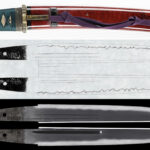 Tanto: Ichi Chounsai Tsunatoshi (2nd Generation)(NBTHK Tokubetsu Hozon Token)
Tanto: Ichi Chounsai Tsunatoshi (2nd Generation)(NBTHK Tokubetsu Hozon Token)

